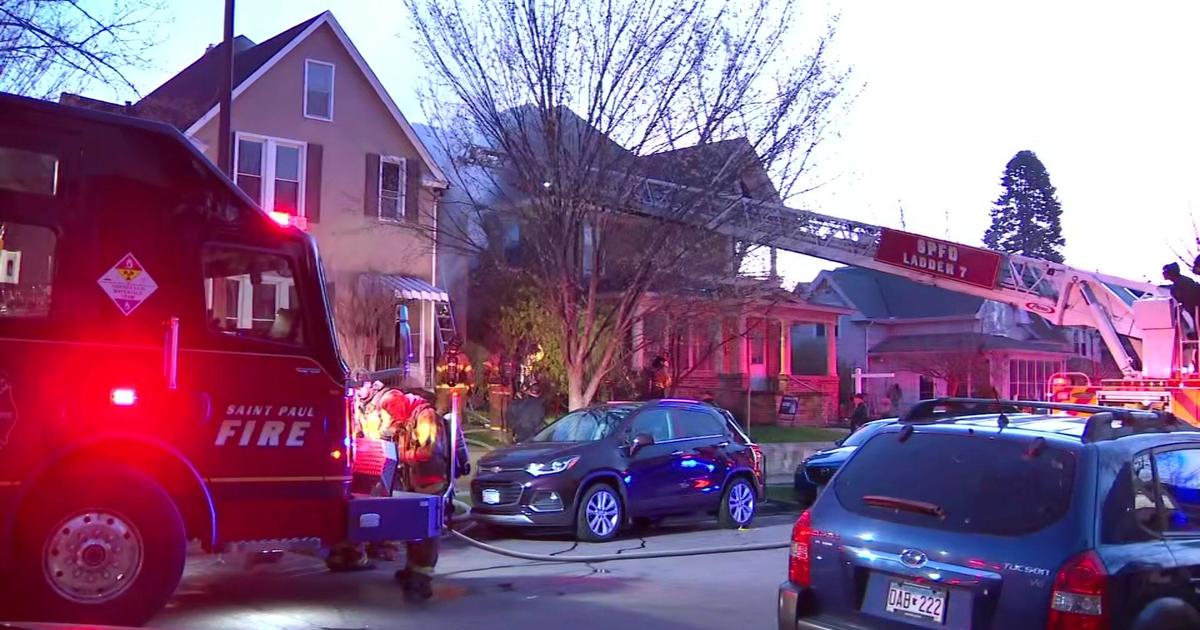Pilot Program In Infrastructure Bill Would Allow For Younger Truck Drivers, But Key Could Be Bringing In More Women
SOUTH ST. PAUL, Minn. (WCCO) - As America grapples with supply-chain bottlenecks—including fewer truck drivers on the road carrying goods—a new program in the federal infrastructure package would allow some 18-year-olds to drive 18-wheelers.
The apprenticeship pilot program would allow 3,000 adults under 21 train to drive long hauls across state lines. They would have to complete hundreds of hours of study with an experienced driver to be certified.
The legal age limit for interstate commerce right now is 21, though many states allow 18, 19 and 20-year-olds to drive semi-trucks carrying goods within state lines, according to the Federal Motor Carrier Safety Administration.
Bill Collins, owner of Interstate Truck Driving School in South St. Paul, said he doesn't think the new change will make a big dent in solving the problem.
Enrollment in his program has remained mostly steady, even this year in wake of demand for drivers and companies offering higher pay.
Keeping drivers well compensated—wages are as high as Collins has seen them since he began in the industry in 1975—and offering good amenities could retain more workers, Collins said.
That, and tapping into a key part of the workforce: women, who make up between 6-7% of the truck drivers today, according to varying estimates. That figure represents a fraction of the total amount of women working today.
"We haven't had much interest from the younger generation in driving truck to be honest with you," he said. "I think the industry needs to welcome women more and that would, I think, have a greater benefit than attracting the 18, 19 and 20-year-olds."
The bill sets up a federal Women of Trucking Advisory Board to provide outreach and training, and to recruit, retain or advance women in the industry.
This year will break a record, according to the American Trucking Associations, with the industry short 80,000 drivers to meet the demands of an economy that's largely relies on trucks for transportation of goods. In 2019, trucks hauled more than 70% of all freight, the group said.
But provision is raising concern among safety advocates, who say the issue facing the trucking industry isn't a lack of workers but a retention problem. They note the dangers of the job and believe that shouldn't be handed off to teenagers.
An U.S. Bureau of Labor Statistics analysis says that heavy and tractor-trailer truck drivers have one of the highest rates of injuries and illnesses of all occupations and the lifestyle is taxing, requiring many hours driving on the road alone and lifting heavy cargo.
"The trucking industry should not be tapping into high school hallways and putting them on to high-speed highways," said Cathy Chase, president of Advocates for Highway and Auto Safety.
The median annual wage for heavy and tractor-trailer truck drivers was $47,130 in May 2020, according to the U.S. Bureau of Labor Statistics, which predicts about 231,100 openings for heavy and tractor-trailer truck drivers each year, on average, over the next decade.
Many of the openings will be the result of employees switching careers or exiting the workforce altogether and entering retirement.
But Joanna Sager of Andover is leaving a 20-year career behind to start a new one as a truck driver, training at the Interstate Driving School. She and her husband will drive as a team to see the country and spend quality time together.
"They have changed and are changing things to make it more comfortable for [women]," Sager said, noting changes to showers and bathrooms and rest stops largely catered to men. "I think it's a profession to go into that women would enjoy."
There are more than 1.9 million truck-driving jobs in the U.S. and Duluth is a top-paying metro area for drivers.



